OK here I go: it works really well.
Seriously, I am grateful for the comment and as usual, propose to cover a few areas with my normal approach: i.e. with a view to modification. First though, an overview bearing in mind that I am discussing a 45 (in reality a 61) year-old design.
Using what used to be called “cart springs” in “pop” car magazines that wished to be derisive, it is truly amazing just how good the Fulvia’s suspension is and how well it works: not only is there a great deal of sheer grip but the ride quality is really excellent, especially for such a small car. How was it achieved?
Good question. From the point of view of the front it is not difficult to provide the answer: wishbones, in particular, long stiff wishbones: unequal-length, non-parallel wishbones at that. It is no accident that F1 cars use wishbones since this is in many ways the best method of keeping the relationship between the two wheels reasonably consistent through all the variations imposed by driving on a real road and of course, steering. The principal disadvantages are mainly seen from the point of view of the cost accountants and conceptual designers: wishbones are greedy for space, they have to be supported inside at four points, they limit steering lock and are costly and complex to make. For Lancia in the great days, such considerations were strictly secondary to the goal of making a car that had engineering integrity and was a pleasure to drive. I should add I suppose that thanks to the great advances in Computer Aided Design, damper design and materials technology, the ubiquitous “Macpherson” strut is now really a very satisfactory solution although I still insist that for ultimate “feel” the wishbone is the best approach as the Fulvia clearly demonstrates.
How not to arrange wishbones! Look at the LH front wheel's attitude. Parallel, equal-length wishbones on a R-Type MG. Picture source: here
For the rear, it is a little harder to establish the reasons for its success, however a simple beam axle has the advantage of keeping the wheels consistently aligned and vertical albeit at the cost of increased unsprung weight. The Panhard rod prevents sideways movement and the long springs provide good ride. Probably the rear suspension would be even better with a lightweight axle (and hubs!) and with the Panhard rod replaced with a Watts linkage or “Woblink”.
There are considerable differences between the Series 1 and Series II cars, and these account for the improved feel and communication experienced by the driver in the former cars. Differences at the rear are minor and need not concern us here, but the front is a different matter. I remarked above about the cost of wishbone suspension: the Series I cars must have been very costly to make. Looking at the inner end of the top wishbone there is a beautifully machined hollow tubular support which is a close fit into the wishbone “eyes”. Nylon bushes enclosed in a thin rubber outer are located in the aluminium towers that carry the suspension loads and connect the subframe to the car body. Inside these bushes are precision-machined steel bushes into which the tube fits. Finally the whole thing is clamped and the steel bushes move inside the nylon. Correct clamping is regulated by means of ground hard shims. Arrangements at the bottom are similar but with individual arrangements for the front and rear of the lower wishbone. Properly maintained, the system is very long lasting since of course it was properly conceived and manufactured.
The Series II system is much simpler. All the precision aspects are no longer there: there is merely a set of Silentblocs and a long bolt at the top, and Silentblocs on each side at the bottom again clamped with bolts.
What is astounding is that despite this compromise with the cost accountants, the SII Fulvias still handle very well indeed; all that is lost is some of the “feel” and delicacy that one experiences with a good SI.
The one, to me, unpleasant compromise at the front in all series, is the means of coupling the upper wishbone to the transverse leaf spring: the famous rubber. Consider how the suspension operates: as the wheel rises the upper wishbone moves towards the horizontal. At the same time (since they are joined) the spring is gradually straightened, so of course it effectively “lengthens” in positional terms. Of course as the wheel falls the process is reversed. This all means that the rubber is subjected to considerable shear loads and thus offers substantial resistance to suspension movement.
Additionally, given the tendency for the front spring to move axially (i.e. the outer ends move fore or aft) the rubber often receives an additional twist. This accounts for the bizarre forms sometimes encountered in these rubbers. Rubber, except for in a real Mini, is rarely good anywhere in a suspension system – except for cars designed for comfort - but as Colin Chapman famously remarked, “An ounce of rubber is worth a ton of theory”.
Next time I will look at some modifications.
À bientôt


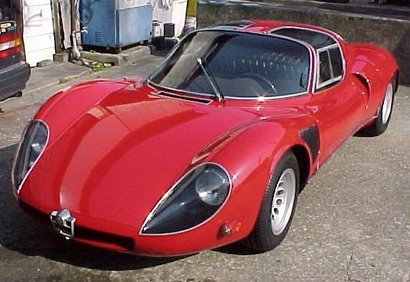
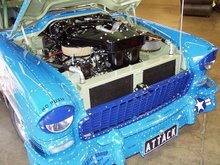
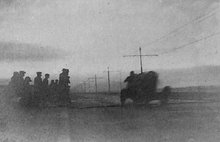

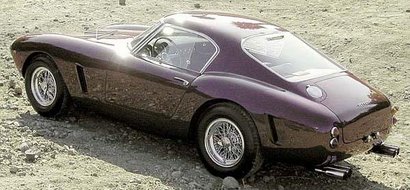
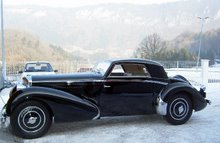
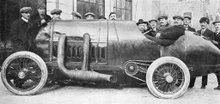


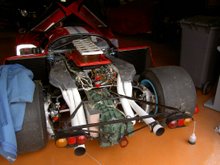

4 comments:
Paul, interesting article, I know of some your mods, the replacement rubber block etc, keep up the good work! Regards, Neil
Since the first formula1 race the cars came a long way. Now the driver survives even a bad crash. Wish I get behind the wheel of the latest Formula1 car by winning a lottery.
You state that there is no significant difference between series 1 and 2 rear suspensions. But even within the first series there is almost a 4Kg weightdifference between full steel berlina and 1200 coupe and zagato axles and the later part aloy 1300 ralley and HF axles. And unsprung weight counts double! The steel series 1 axle weighs without hubs 12.5Kg. No idea what the difference between the total weight of series 1 and 2 (steel) axles is but I bet the series 2 axles with their handbrakedrums are much havier. The lighter the car the less the unsprung weight has to be. Thats why heavy berlinas ride so well over the roughests of roads. Their weight vs unsprungweight ratio is very favourable compaired to the lighter coupes.
Yes William, of course there are differences and in absolute terms they might have a small effect, but I wouldn't consider it significant. And remember the terrible weight of the dreadful Dunlop rear calipers: 5.5kg per side - unsprung of course!
Post a Comment